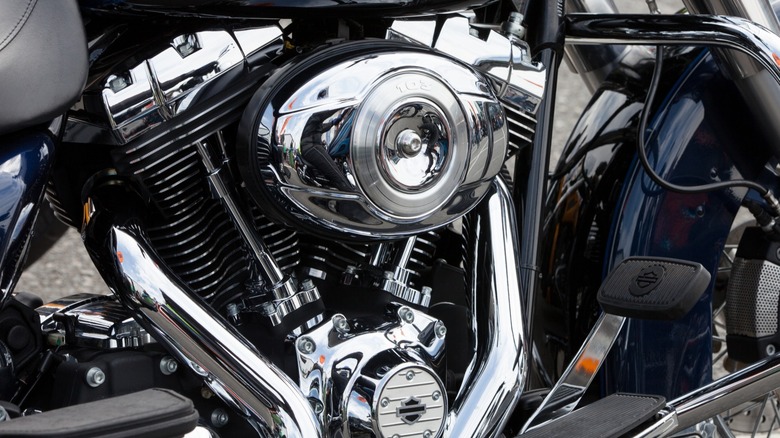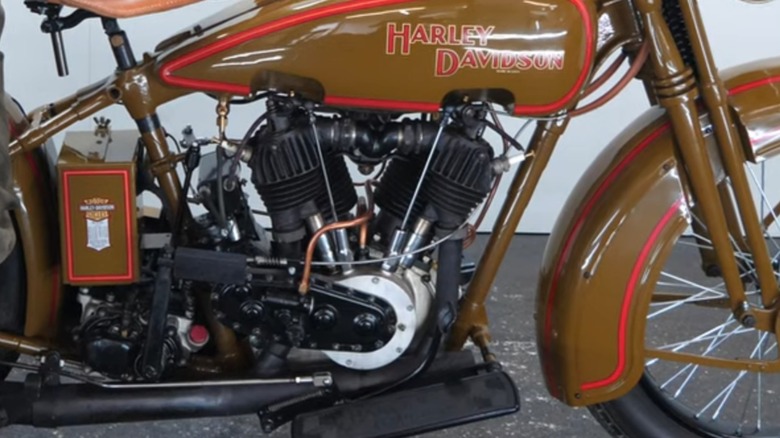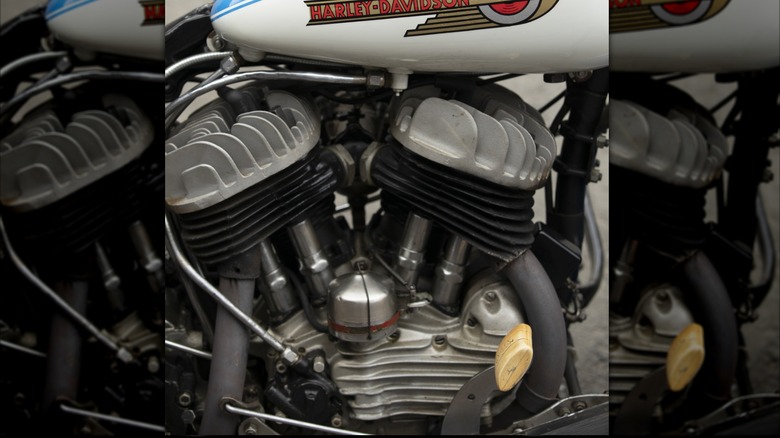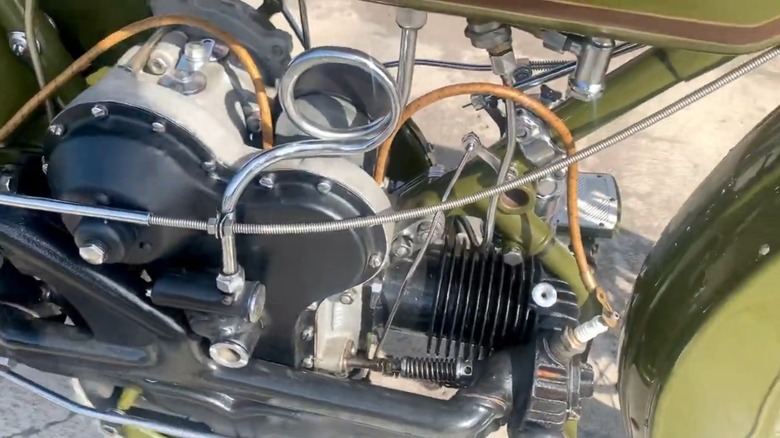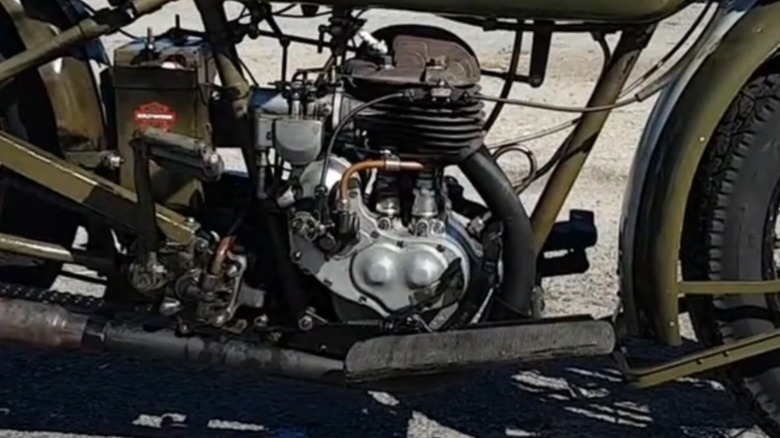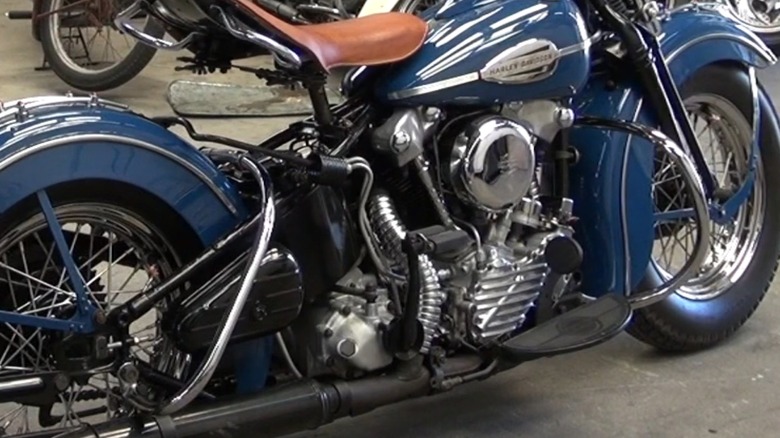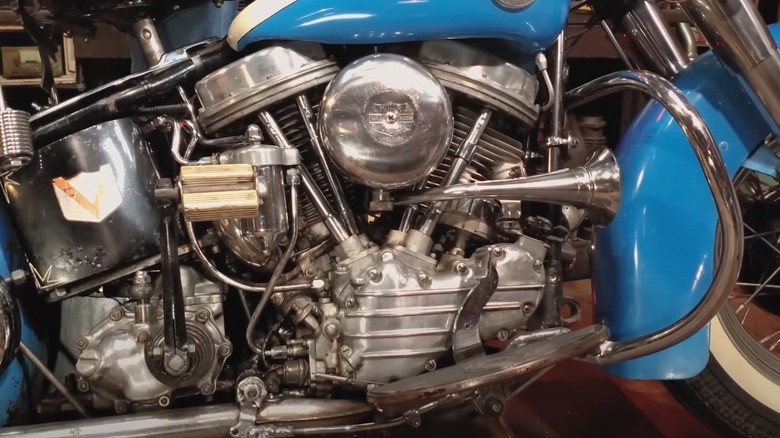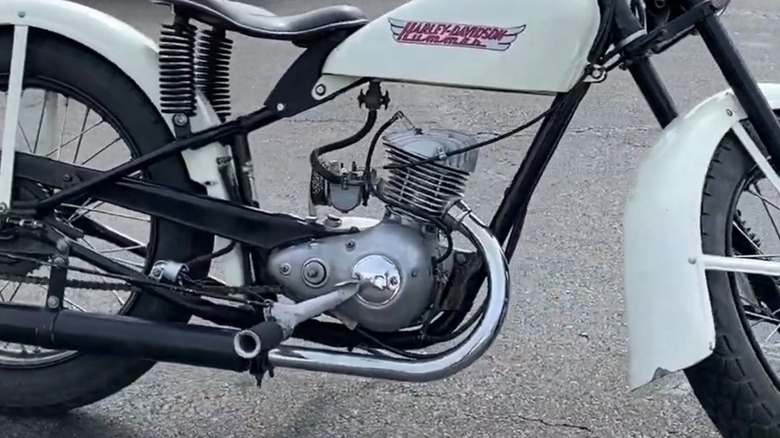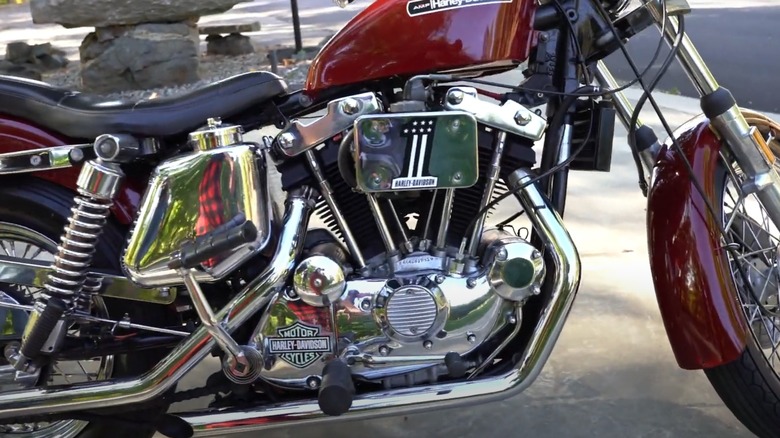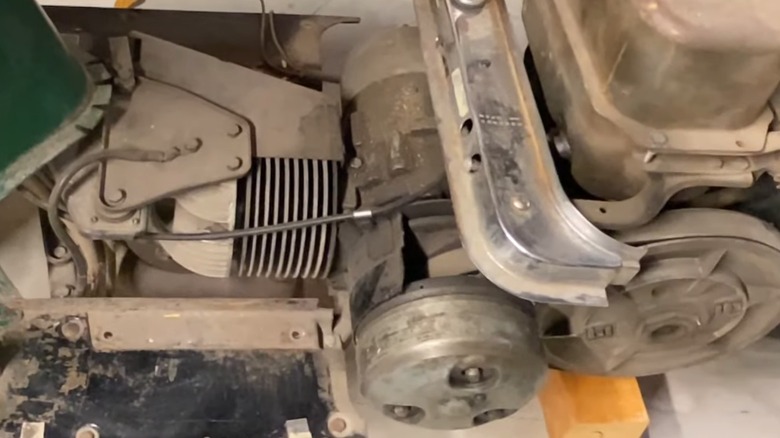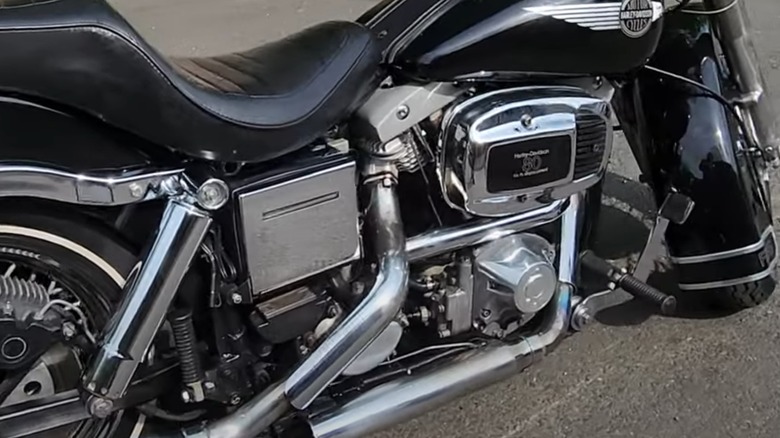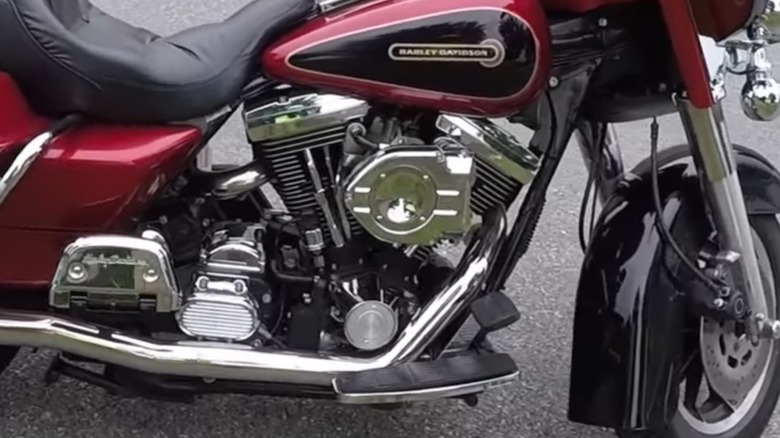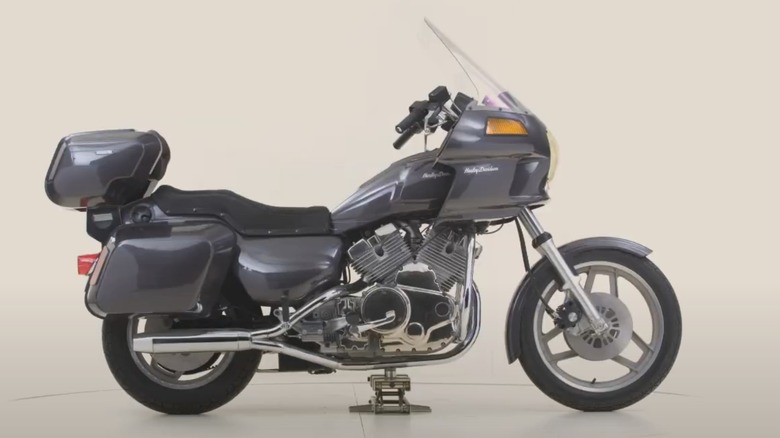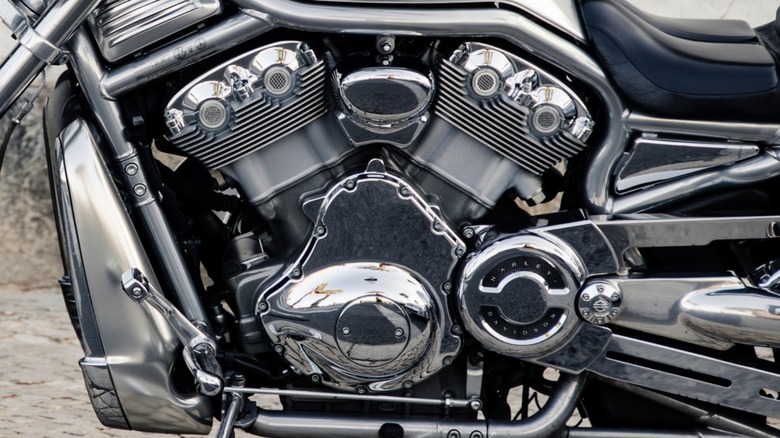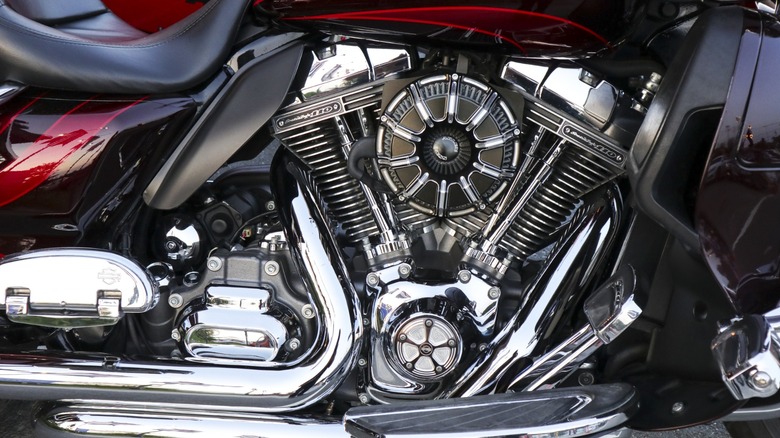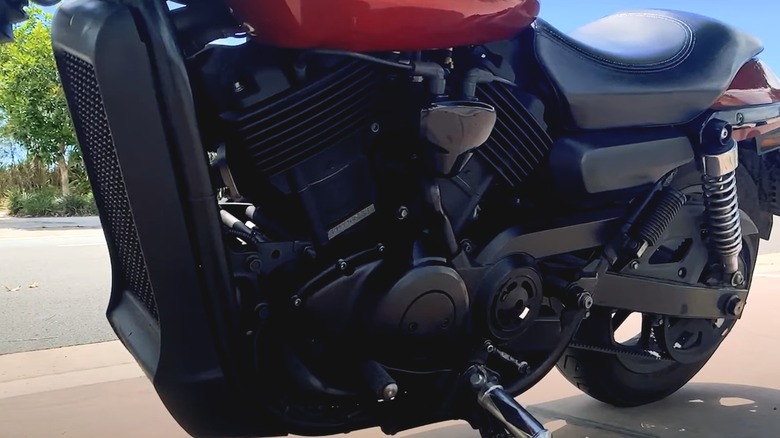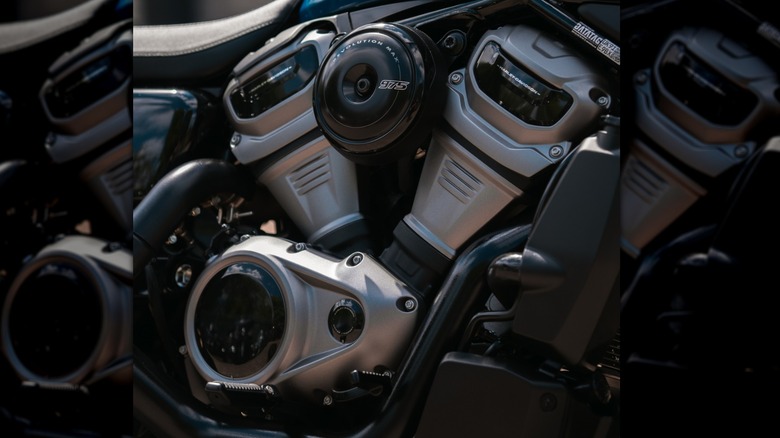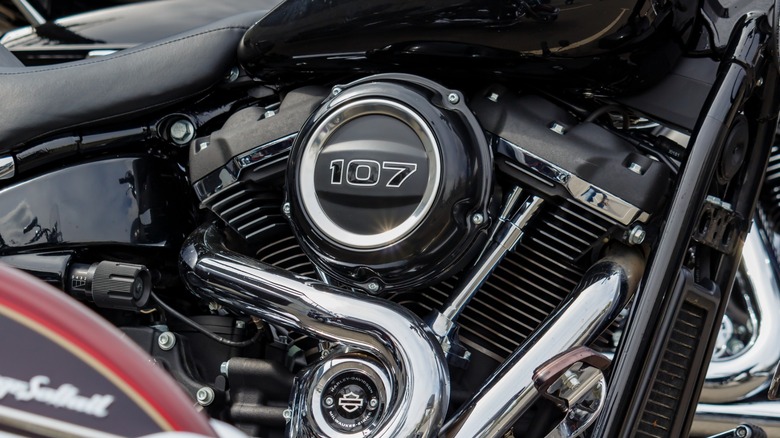Every Harley-Davidson Engine Ever Built
While you may be able to name a dozen prominent American manufacturers, few produce a product as legendary and iconic as Harley-Davidson, Inc. With more than a century of motorcycle building history, it is today a beloved American institution making products instantly recognized around the world. Furthermore, few manufacturers have a culture surrounding their products so loyal and deeply ingrained as Harley.
Harley's association with the v-twin motorcycle runs deep, and its products are inextricably linked to its engines. Yet, the v-twin is not the only engine Harley has ever produced, and the v-twin it makes today is not the same engine it made years ago. A steady evolution of engines litter the past along with a few oddballs and a couple that might be surprises to some. To look at the engines made by Harley on American shores, excluding those built in Italy during the Harley-Davidson/Aermacchi period, this list runs down all of the engines the brand ever built.
Harley-Davidson F-head
In 1903, William Harley joined Arthur, William, and Walter Davidson to develop and build motorized bicycles. With no plans to start a would-be historic manufacturer, they created an engine to achieve their goal. This was a single-cylinder 440cc engine making four horsepower with an inlet-over-exhaust setup, which is known as an F-head.
Built with the intake valve over the piston and the exhaust on the side, efficiency is higher than other available and easily manufactured designs of the time. And as for Harley, the design worked and sales began to take off. The F-head single powering its early bikes was later developed into a v-twin by grafting two 440cc cylinders onto a single crankcase, establishing the engine layout that would dominate not just Harley-Davidson, but American motorcycle manufacturing at large through to the modern day. F-Head production kept apace through tremendous growth of the company until being replaced in 1929.
Harley-Davidson Flathead V-twin
The first major engine update from Harley came in 1929 with the introduction of its Flathead v-twin. Initially released as a 45-cubic-inch (750cc) model to compete with the Indian 750 v-twin, it quickly caught on, powering many Harleys, including the WWII WLA for the military. Even when an updated engine was introduced, it retained the bottom end of the Flathead, a testament to the quality of its 1920s engineering.
Harley decided against using overhead valves due to cost, as metallurgy at the time was still developing. In the second year of production, a 73-cubic-inch version joined the lineup, and both proved to be mostly trustworthy and durable. However, lubrication utilized a total loss system that dripped gravity fed oil to the various components, eventually dripping onto the frame and then to the ground, a messy proposition. Regardless of any shortcomings, the Flathead remained Harley's mainstay engine through WWII and continued in production until 1974.
Harley-Davidson Boxer Twin
Harley's inextricable link to the v-twin engine is not absolute, and variations exist early in its history. Demonstrating this is an engine made for the Harley-Davidson WF Sport, which was built from 1919 to 1923. It is one of the many Harleys you may not know of, and it was marketed toward women but only found significant popularity in Europe.
The unique 584cc engine produced 6 horsepower using twin cylinders mounted fore and aft of the crankcase, which is like a BMW motorcycle engine if it were to be rotated 90 degrees. The center of gravity was low, and the chain was kept away in a fully enclosed chain guard. While it was a capable bike of good quality, only about 10,000 were built. Harley later revisited the boxer design during WWII, but that was a BMW copy, making this Boxer Twin its only original boxer design.
Harley-Davidson Peashooter
Looking for growth opportunities overseas in the 1920s, Harley-Davidson recognized that big v-twin engines were not going to do well, while small displacement singles would sell poorly domestically. Therefore, a new 500cc engine was developed for 1929 models made primarily for export.
The single-cylinder 500cc engine used a side-valve design — a flathead design was used only for 1929 models — and was placed into frames smaller than the big twins but with a nearly identical look. With 10.5 horsepower and three forward gears, a Model C could reach speeds of up to 60 mph. Known as the Peashooter for the sound of its exhaust, retail price on these was only $255, which you might note was just below the $260 price of a Model T at its lowest, and a 350cc version was also made that could get the price below $200. These are rare today as the Depression eventually caused export sales to peter out, and 1934 would be the last year of production.
Harley-Davidson Knucklehead V-Twin
Even though Harley's new Flathead engine was only a couple of years into production, management at the company authorized development of a new overhead valve engine in 1931. After a few years of development, Harley introduced its first OHV engine, called Knucklehead for the shape of its distinctive rocker covers.
With the new engine came internally pumped oil using a dry sump, a 4-speed constant-mesh transmission, and a displacement of 60.3 cubic-inches. Early examples suffered from oil leakage issues and weak valve springs were prone to break, but these issues were resolved within a few years of production. WWII disrupted development and production of all motorcycles, and by the time it ended, the Knucklehead was due for a replacement. The Knucklehead only lasted a couple more years after civilian production resumed — its production ended in 1947. Many Knucklehead models are now valued at up to $140,000.
Harley-Davidson Panhead V-Twin
With the conclusion of WWII and millions of soldiers returning home to civilian life, demand for consumer goods, new vehicles in particular, rose to new heights. With the Knucklehead having reached its limits, Harley-Davidson quickly put together its replacement in time for the 1948 model year.
Testing and engineering dedicated to the war effort became the basis for some of the engineering of the new engine, which led to retaining the battle-tested crankcase and transmission being joined to new cast-iron cylinders and aluminum heads. These offered better cooling along with a revised oil pump, allowing for higher revs and more power. Upon introduction, the improvements rattled the competition for being so advanced and well-developed. The polished rocker covers resembled frying pans, earning it the Panhead nickname, which has stuck ever since. While it suffered from a few problems, particularly in early models, it remained in production until 1965.
Harley-Davidson Hummer 125cc single
As noted above, after the conclusion of WWII, civilian production of motorcycles resumed in haste, with Harley developing new models for eager customers across the United States and beyond. However, one new model released in 1948 by Harley required no development as the plans had been taken from German manufacturer DKW and distributed to the Allies.
What started as a DKW RT 125 became the Harley-Davidson Model 125, which was then renamed as Hummer in 1955. The DKW design was robust and featured great engineering, particularly for the engine. DKW had highly advanced designs for 2-stroke engines, and the model that Harley produced domestically proved to be simple and reliable. The 125cc engine required oil-mixed fuel and produced just three horsepower to start, but subsequent models raised displacement first to 165cc and again to 175cc, providing a whopping 10 horsepower before production of the engine ended in 1966.
Harley-Davidson Ironhead V-twin
In 1957, a new smaller version of Harley called the Sportster entered showrooms. Meant to be a smaller, lighter, and easier-to-handle bike, the Sportster also received a smaller engine. With a 45-cubic-inch displacement and overhead valves, the Ironhead got its name for the iron rocker boxes housing the valve train up top.
The Sportster line proved to be highly successful and it is still in production today. The original 45, which is roughly equivalent to 750cc, was also offered in 900 and 1000cc versions. Furthermore, the Ironhead found use in the XR750 flat track racing model. Introduced in 1970, The Harley-Davidson XR750 went on to win 37 of 44 American Motorcyclist Association Grand National Championships as one of the most successful bikes to compete in AMA history. Investors bought Harley in 1981 from AMF, immediately making many changes, leading to the end of Ironhead production in 1985.
Harley-Davidson Topper 165cc single
While expanding its range to include lightweight motorcycles, Harley-Davidson sought Italian-built machines. But in response to rising demand for Vespa and Lambretta motor scooters, a homegrown design was chosen to be built in Wisconsin. This innovative cycle called the Harley-Davidson Topper went on sale in 1960 and featured a metal frame with a fiberglass shell covering the engine. Sales were poor and production ended in 1965.
The 2-stroke 165cc engine is a derivative of the DKW model used on the Hummer. However, its cylinder is horizontally positioned and connected to a CVT, a unique feature at the time. Oil-mixed fuel is required, and a pull start was used as Harley thought owners would have been familiar with such a starter on lawn equipment already. Output was rated at 9 horsepower but a second model was offered with 5.5 horsepower for states that offered a restricted license for low-powered cycles.
Harley-Davidson Shovelhead V-twin
Midway through the 1960s, Harley refreshed its big v-twin once again, introducing several features that promised to deliver big improvements with more power and reliability. However, some promises Harley proved unable to keep, and in the end, this tarnished the company's reputation.
Maintaining the same bottom that had served it well for many years, Harley installed new aluminum cylinders with revised heads and released 74- and 82-cubic-inch versions. Rocker boxes sitting on top resembled upturned coal shovels, giving it the name Shovelhead.
Released in 1966, the Shovelhead was meant to offer better performance and reliability. But the engine became plagued by problems with overheating, faulty electronic ignition, and blown head gaskets. A takeover of an ailing Harley-Davidson by AMF only made things worse for the struggling engine. After a private buyout of AMF, replacing the Shovelhead was one of the first things to happen. Production ended in 1984.
Harley-Davidson Evolution
When the grandson of co-founder William Davidson gathered a group of investors to buy Harley-Davidson from AMF, it had seen better days. Quality had sunk to new lows, and the Panhead engine was widely seen as unreliable. Replacing it was imperative for the company.
With plans originating in 1976, the new Evolution v-twin debuted in 1983. Aluminum heads and cylinders held to the crankcase by long studs helped prevent overheating and oil leaks, two long standing Harley problems. Furthermore, design enhancements provided increased power and economy, making the Evolution an engine that just worked.
Many cite its success with saving the company, although influencing the Reagan administration to levy tariffs on imported motorcycles played its part. Nonetheless, it did prove to be a robust and reliable engine that served Harley well until its retirement in 2000, and played a significant role in Harley becoming the successful company it is today.
Harley-Davidson Nova V4
Developed concurrently with the Evolution v-twin was an engine that could have laid a very different path for Harley-Davidson had it come to fruition. Looking to counter Japanese competition and its advanced engine design, Harley-Davidson began Project Nova to develop a more modern engine with engineering help provided by Porsche.
The Nova V4 was a water-cooled 4-cylinder engine built as part of the frame and featuring twin overhead camshafts and even provisions for fuel injection, the polar opposite of a Panhead v-twin. It was advanced, smooth, and quiet while offering excellent performance and economy. Harley dumped millions into the project, ultimately building fully-functional prototypes and creating plans for a 6-cylinder and v-twin version of the engine.
Ultimately, there could only be one new engine, and the Evolution made more sense while being more affordable. The Nova Project was then kept secret for 25 years before being revealed in a new factory museum in 2008.
Harley-Davidson Revolution V-twin
Though Porsche helped Harley-Davidson with the Nova Project that would never see the highway, its engineering expertise did contribute to another project that actually made it to production. It would also be for the first time in its 100-year history that a Harley was liquid-cooled.
While the new engine was a follow-up to the Evolution engine, nothing about the Revolution is shared, except for the v-twin layout. This was a v-twin engine with dual overhead-cams and four valves-per-cylinder being fed by fuel injection, making it as modern and advanced as anything else in 2000. It was destined for the new Harley-Davidson V-Rod, a street bike unlike anything else from the company. Its 120-horsepower output made the V-Rod built more for speed than any other model, and the Revolution engine paved the way for today's other liquid-cooled Harleys. Although purists snub the V-Rod, it has helped make the brand as modern as it stands today.
Harley-Davidson Twin-Cam
The Evolution engine introduced in the '80s proved to be highly successful. Harley sought to update it in the '90s, and rather than using the same crankcase dating back to 1936 as they had done before, they introduced a completely new engine sharing just 18 parts with its predecessor.
Although Harley-Davidson Twin-Cam engines have some common problems, they are generally reliable and updated parts resolved many issues early in production. It was built from the start to increase overall reliability and address leaking issues to the point that they simply no longer existed. Furthermore, modified Evolution engines often overwhelmed the crankcase, and the Twin-Cam was built stronger to handle modifications. It remained the same 45-degree v-twin with pushrod actuated valves, but everything else had been changed, including the use of two camshafts, a practice of very early Harley engines.
The Twin-Cam served Harley well and worked to bridge the gap from mechanical to digital as technology encroached upon every part of a motorcycle. It continued in production until being replaced by the current Milwaukee Eight for the 2017 Model Year.
Harley-Davidson Revolution X V-twin
In 2014, Harley-Davidson did something that many likely viewed as not fitting with the brand or straying from what makes a Harley to begin with. However, releasing new models in 500cc and 750cc engine sizes was nothing new and a practice running back to the 1920s. Furthermore, these small machines were sophisticated and modern, adding a dose of contemporary flare to the bikes.
The Revolution X engine was all-new in 2014. The v-twin engine featured water-cooling with single overhead-cams and fuel injection. The smaller machines were part of a plan to further the company's reach into India, which is where production occurred for international markets, while American models were produced domestically.
Harley's foray into India ended in 2020 with the closure of its subsidiary, and the small v-twins in all markets went away with it. While the Revolution X generally received positive reviews, the smallest engine offered today is nearly one liter.
Harley-Davidson Revolution Max V-twin
Even with some doubt and skepticism from fans regarding a water-cooled Harley, the Revolution engine remained in production for 18 years. With the discontinuation of the V-Rod after 2017, Harley built upon its success and updated its first water-cooled power plant to create its successor, the Revolution Max.
While the Max is built to the same size as the outgoing Revolution, 1,250cc, changes abound elsewhere. The most significant improvement is the addition of variable valve timing on intake and exhaust, which is included on all Max engines and not just premium models. Engine construction utilizes lightweight aluminum and magnesium along with components such as sodium-filled valves all to reduce weight and increase cooling while providing for quieter running. Most significantly, the Max v-twin produces 150 horsepower, the most of any Harley to date, and it is used on the Sportster, ending a 65-year run of air-cooling for the model.
Harley-Davidson Milwaukee-Eight V-twin
2016 saw the introduction of the Harley-Davidson Milwaukee-Eight v-twin, one of its most reliable engines yet. Powering a wide range of models, including its biggest and most exclusive, the Milwaukee-Eight blends Harley's engine traditions with modern engineering to create something powerful and efficient while maintaining the heritage of the brand.
The biggest improvement of this engine is the doubling of the valves to eight, hence the name. While they remain pushrod-actuated, the additional valves improve power delivery and cooling potential. In fact, detailed improvements with advanced technology have fundamentally changed how Harley builds its big v-twins, but all of it results in more power and better reliability. Twin spark plugs, smaller combustion chambers, and liquid-cooled heads on some models are among these developments. Regardless of these changes, whether you ride a 107 or 114, the Milwaukee-Eight is still all Harley — and for that, it's unwaveringly dependable.
